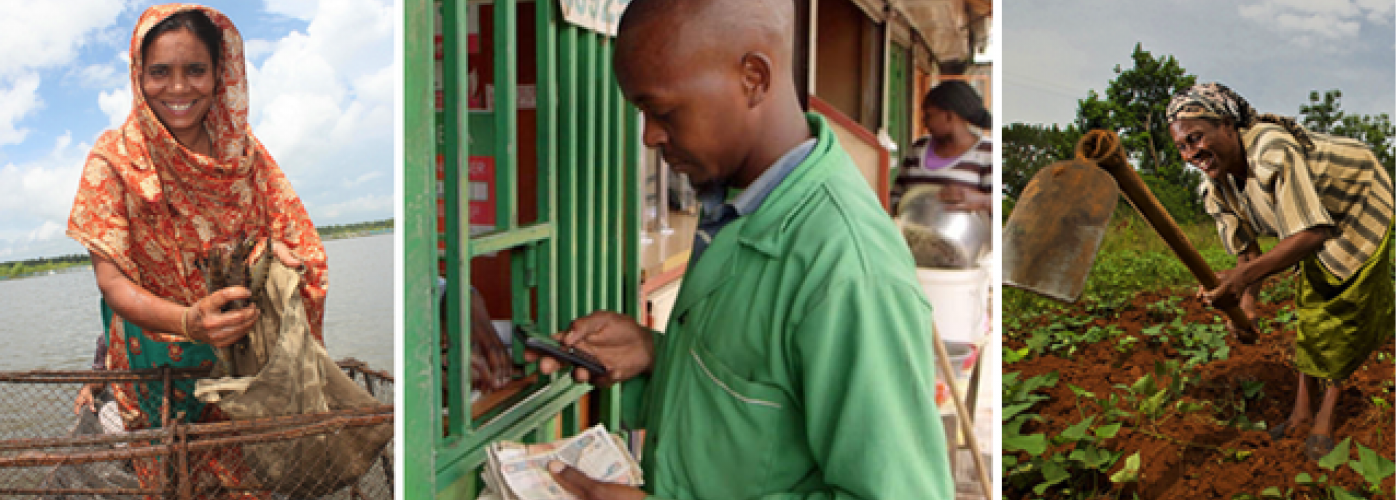Do Farmers Really Want to be Paid in Mobile Money?
Image

This post was originally published on ICTWorks.org.
Do farmers really want to be paid in mobile money? To answer this question, I’ll ask you to first entertain a brief thought experiment.
Imagine that your employer told you that next pay period, your company will start paying you in Bitcoin. How would you react? Sure you’ve heard about Bitcoin, but you have lots of questions as to what it will mean to receive your salary this way, such as:
- Am I getting swindled?!
- Where can I use bitcoin?
- Can I spend it like dollars, or will I have to convert into dollars first?
- Where can I convert?
- How much is the conversion fee?
- Will I be paid into my same bank account?
Your employer has some responses to your questions:
- There are only a few places to use Bitcoin in Washington, DC.
- In order to spend your money anywhere else, you’ll have to convert first, and pay a fee to do so.
- You’ll have to set up a new account, and learn a new app.
- If you want to help to learn this new system, you can take unpaid leave to sit in a classroom and attend a financial literacy training…
Your Response to Bitcoin is Their Response to Mobile Money
Perhaps this sounds like a less than ideal situation, but it really is not that different from how a farmer must feel when the company they usually sell their produce to decides, or offers, to start paying them in mobile money.
Maybe the farmer has heard of mobile money; she’s heard some good things, but she’s also heard some stories about fraud. Besides, she’s used to cash, and she doesn’t have the luxury of time to learn an entirely new system since she needs to tend to her farm, her children, and the other side jobs she takes on to help pay the bills.
Why is this thought experiment relevant? Efforts are currently underway in many countries to digitize payments along the agricultural value chain. This is due to both the growing evidence that access to a digital account increases household resilience and the potential for mobile money to increase farmers’ access to financing (think loans for inputs) and markets (think connections to more buyers and the ability to lock in better prices).
Three Ways to Improve Mobile Money Adoption
Often, the assumption is that we should start by digitizing payments from buyers to farmers. These are large, bulk payments that can be transitioned from cash to electronic fairly easily from a technology standpoint. This would get money into the farmer’s mobile wallet so that they start to become familiar with the concept.
However, in select value chains in Uganda, USAID and our partners are finding that this is not necessarily the best way to encourage adoption. While some agribusinesses and farmers are signing on enthusiastically, we’re not yet seeing the type of scale that is necessary to really start building out a rural digital financial ecosystem.
Based on this experience, I see three keys shifts underway that can help:
- We need to ask what the farmer actually wants.
The payments first approach to digitizing the value chain fails to start with an understanding of the farmer’s interest in transitioning to mobile money, as we start to understand when we consider the idea of transitioning our own salary to Bitcoin. The farmer, who may not have a mobile phone, who may rarely leave her farm and may never have been to bank, is often perfectly happy with cash.
So, we have to ask, what does the farmer need? Access to credit for inputs, on-demand production and marketing services, access to household solar through a digital pay-as-you-go plan, and an easy way to pay for school fees are all products that are based on real constraints that many farmers in Uganda face.
To better understand what makes mobile money attractive to a farmer, United Nations Capital Development Fund (UNCDF) and CGAP are undertaking a Value Proposition Mapping, which will help the private sector tailor products accordingly.
- We need to expand our idea of the user.
When we talk about being user-centered, we often think immediately of the individual. However, within a value chain, we need to think of the incentives and capacities for a wide variety of users, including the farmer, other members of the farmer’s household, the agribusiness, the cooperative, the community savings group, and the mobile money provider.
For example, we’re finding that agribusinesses may need significant system upgrades and process changes to transition away from paper based processes.
- We need to reassess the starting point.
As we’re finding through Digital Development for Feed the Future, a three-year collaboration between the Global Development Lab and the Bureau for Food Security within USAID, improving data collection and data usability underpins all of our efforts to improve agricultural results through digital tools.
For example, our partner in Uganda, Akorion, is facilitating input loans to farmers with digital farmer profiles that provide banks with detailed information on which they can base creditworthiness. Through its market system digitization platform and Ezy-Agric, Akorion bridges the information and service delivery gap for farmers and agribusinesses.
These three suggestions are based on our experience to-date in Uganda, as well as the experience of USAID’s partners, including Strategic Impact Advisors and UNCDF’s program in Uganda. However, these suggestions all need to be tested and may change or need to be modified quickly.
The key takeaway? Remember to challenge your assumptions by always taking a minute to imagine yourself in a similar situation. How would you feel?


